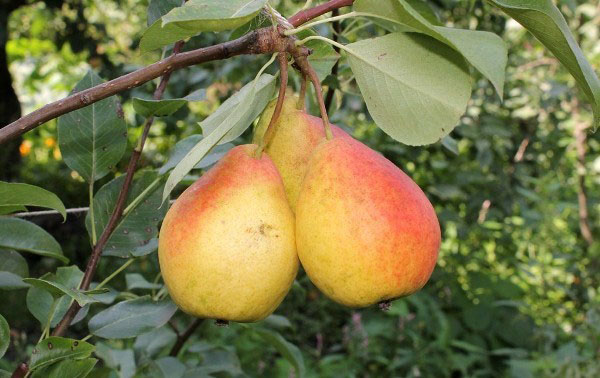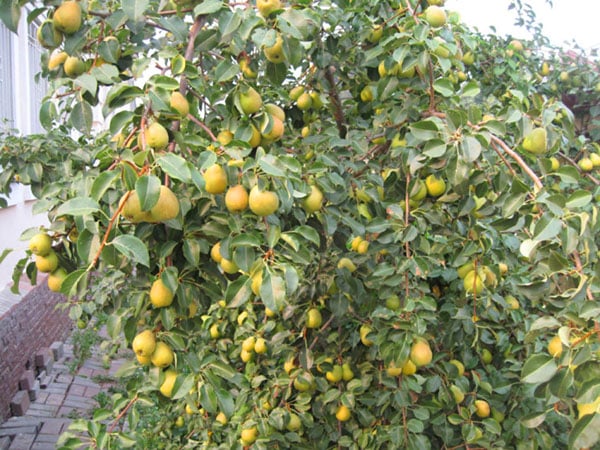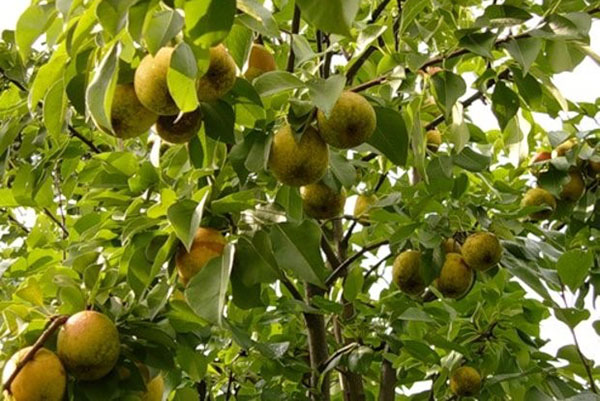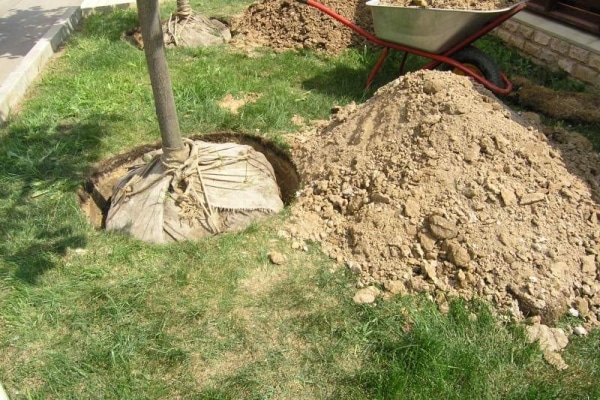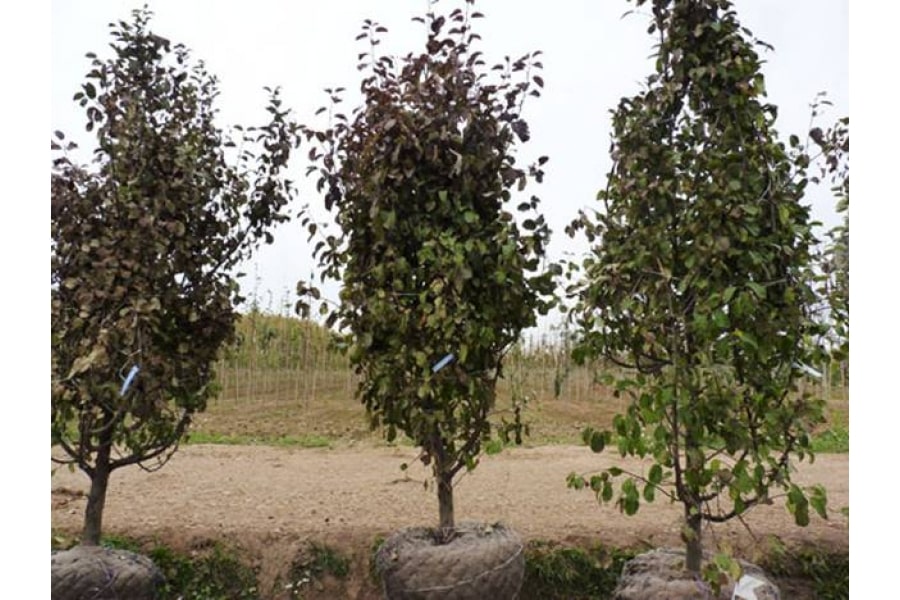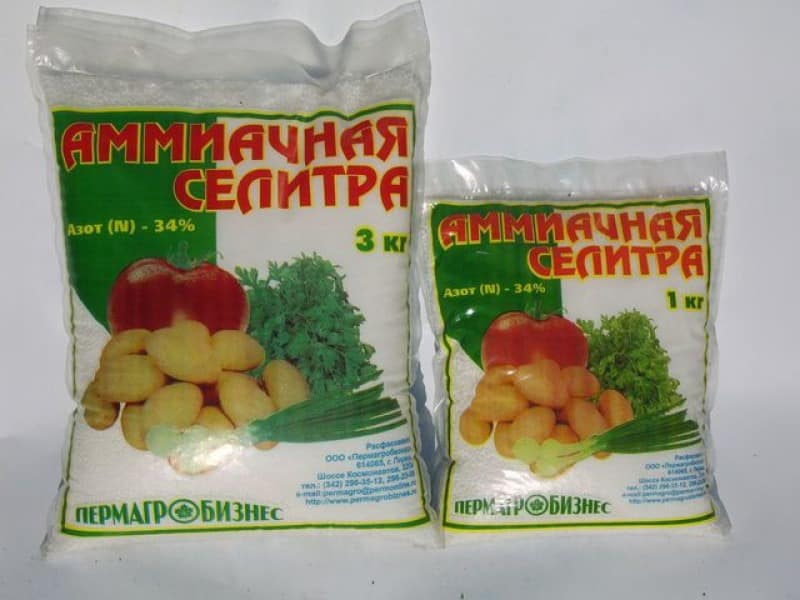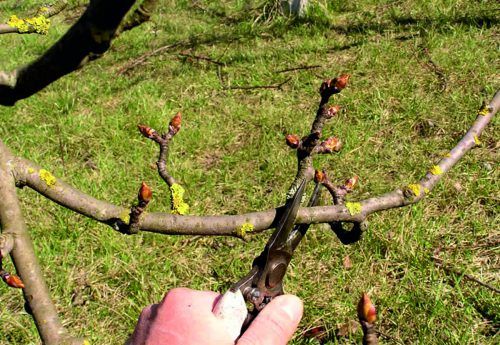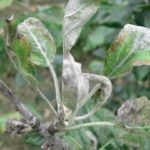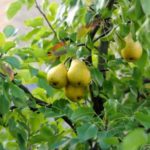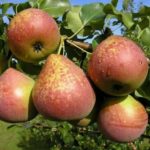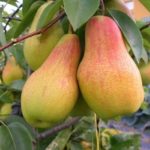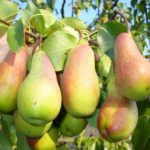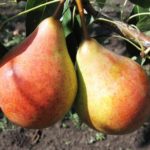The name of the pear is not accidental; Severyanka is a frost-resistant hybrid intended for northern regions with cold climates. The form is old and well known. The Severyanka pear was included in the state register back in 1965. The author is P. N. Yakovlev, an employee of the All-Russian Research Institute named after I. V. Michurin. The parent forms Koperechka Michurinskaya No. 12 x Lyubimitsa Klappa were used in the work.
- Description and full characteristics of the Severyanka pear
- Tree height
- Lifespan
- Pollinators
- Cyclicity of fruiting
- Productivity
- Resistance to environmental conditions and diseases
- Winter hardiness
- Varieties
- Advantages and disadvantages of the variety
- Growing pear
- Deadlines
- Technology and agricultural technology
- What is the best thing to grow from?
- Distance between trees
- Tree care
- Fertilizer application
- Watering rules
- Rejuvenation
- Diseases and pests
- Harvest and storage
- Which regions is the variety best suited to?
Description and full characteristics of the Severyanka pear
The variety has not lost its relevance. Now the Severyanka pear is popular among gardeners in the Urals. You can meet it in Siberian gardens and the Far East. The fruits have a universal purpose, a list of main characteristics:
- size below average;
- weight 80 g;
- blunt conical shape;
- the main color of the ripe fruit is yellow, integumentary, pale pink, blurred;
- flesh color is cream;
- the taste is satisfactory, the juiciness is high;
- The flesh is crispy and dense.
Tree height
The wide pyramidal crown is formed by strong branches of medium thickness, covered with smooth gray bark. Adult specimens reach 5-6 meters in height; the hybrid belongs to the group of medium-sized plants. The leaves are glossy, dark green, serrated along the edges. The flowers are pure white. There can be more than 5 of them in one inflorescence.
Lifespan
When planting a Severyanka pear in your garden, you can count on long-term fruiting. The lifespan of a pear is from 35 to 60 years.
Pollinators
Self-fertility in pears is low. In the absence of pollinating varieties in the garden, it sets only 35% of the fruits. According to gardeners, the best pollinator for Severyanka is the old variety Pamyati Yakovlev.
Cyclicity of fruiting
The form has no frequency of fruiting. The northern plant produces its first harvest at the age of 3-4 years, does not rest, blooms and bears fruit every year.
Productivity
The average yield of an adult Severyanka pear is from 45 to 60 kg. If the weather is favorable, up to 100 kg of fruit can be collected from one tree. The highest yields are recorded for pears older than 8 years.
Resistance to environmental conditions and diseases
The variety is resistant to scab pathogens and rarely suffers from fungal diseases. Immunity decreases after the tree freezes. It is after abnormally cold winters that pests attack trees. Drought resistance is not high.
Winter hardiness
The variety is frost-resistant with good restorative ability. Mature trees can withstand frosts of 50 degrees. Such cases were described by gardeners from Ufa. Only young trees suffered from short-term frosts of 50 °C. In winters, when frosts exceeded 40 °C for a long time, the above-ground parts of the trees froze heavily, but recovered quickly.
Varieties
At first, the hybrid was called Severyanka Yakovleva. Over time, it was shortened, the pear bred by P. N. Yakovlev began to be called simply Severyanka. It was used in breeding work. When crossed with another variety, a new form, Severyanka red-cheeked, was obtained. A summer variety, the fruits ripen in mid-August.
Advantages and disadvantages of the variety
For many years, the Severyanka pear has earned a good reputation among gardeners. The variety undoubtedly has its disadvantages, but its advantages outweigh them.
| pros | Minuses |
| Frost resistance | Lack of moisture affects the size and taste of fruits |
| Recovers quickly after freezing | Ripe pears fall off |
| Compact crown, convenient for harvesting and processing | Short shelf life of the crop |
| Early maturation | Fruits are not subject to long-term transportation |
| Productivity |
Growing pear
Loamy and sandy loam soils are more suitable for Severyanka. The groundwater level should be no higher than 2 m. The degree of illumination of the crown affects the quality of the crop.
Deadlines
Seedlings are planted in the spring from April to early May, in the fall - throughout October. In warm regions, they prefer to plant Severyanka in the fall.
Technology and agricultural technology
The soil is prepared 7-14 days before planting. Prepare a pit measuring 0.8 x 0.8 x 0.6 m. The fertile layer is mixed with 2-3 buckets of humus, superphosphate and potassium nitrate are added. A stake is driven into the center of the hole.
A pile of earth is poured onto the bottom. The seedling is placed on the south side of the support, the roots are spread along the perimeter of the mound, and covered with soil. Make sure that the root collar is above ground level (5-7 cm). Form a hole and pour 3-4 buckets of water into it.
What is the best thing to grow from?
The easiest way to propagate Severyanka pear is with ready-made seedlings purchased from a nursery. Experienced gardeners practice propagation by layering, seeds, and cuttings.
Distance between trees
The crown of Severyanka is wide, the tree needs a large feeding area and bright lighting. There should be no structures or tall trees at a distance closer than 5 m from the pear trunk.
Tree care
The yield of Severyanka pear directly depends on the quality of care. The tree and the tree trunk are processed. The soil is loosened, mulched with manure, and cleared of weeds.
The tree is fed, the condition of the crown is monitored, and preventive treatments are carried out. copper-containing preparations and fungicides.
Fertilizer application
An approximate feeding scheme is shown in the table. The working solution is prepared according to the instructions. Fertilizer consumption is based on the size of the crown.
| Time | Fertilizer |
| At the beginning of the growing season | Ammonium nitrate |
| After flowering | Nitroammofoska |
| in autumn | Superphosphate + potassium chloride |
Watering rules
Lack of moisture affects the taste of the fruit. They become smaller, the flesh becomes hard and not tasty. If there is little rain, the trees are watered every week.They spend as many buckets on one tree as it is old.
Rejuvenation
Young trees undergo sanitary and formative pruning. With age, the yield decreases and there is no shoot growth. To rejuvenate the tree, the crown is made more sparse. First of all, old, damaged branches are cut out. Remove shoots that grow inside the crown and are twisted. Heavy pruning stimulates the growth of young shoots.
Diseases and pests
After a frosty winter, a weakened tree may experience a bacterial burn. Severyanka’s immunity is excellent, but the possibility of scab and fruit rot cannot be 100% excluded. Among the pests you should be wary of are:
- pear leaf gall midge;
- hawthorn butterflies.
The advantage of the hybrid is its resistance to the pear gall mite and the codling moth.
Harvest and storage
The yellow color of the fruit is a signal for harvesting. All fruits ripen between August 10 and August 30. Their flesh becomes brown and inedible if left on the tree longer. Ripe fruits fall off, so harvesting begins a week before they are fully ripe. Pears picked in a timely manner can be stored at a temperature close to 2 °C for up to 2 months.
Which regions is the variety best suited to?
The variety was included in the State Register in 1964. Severyanka pear was recommended for cultivation in the Primorsky Territory, Khakassia, Krasnoyarsk Territory, Altai, Kurgan and Chelyabinsk regions, Bashkiria, Volga-Vyatka and Middle Volga regions.
The Severyanka pear is not suitable for industrial cultivation, but it is irreplaceable in amateur gardens in Siberia, the Far East and the Urals. Care for an adult tree is minimal, and the yield of the Severyanka variety is always high.

